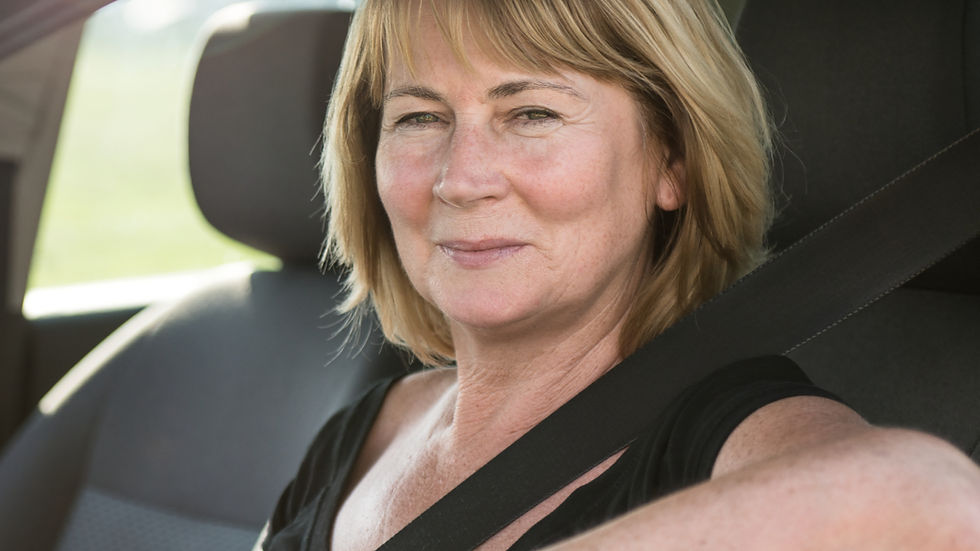Essential Strategies for Staying Safe During an Earthquake
- anita M.

- Apr 25
- 4 min read
Updated: Jun 23
Response if You’re in a Wheelchair

If you find yourself in a wheelchair during an earthquake, your immediate response should be to Lock, Cover, and Hold On. Locking your wheels and remaining in place helps prevent your wheelchair from rolling away. Protect your head and neck with your arms or any nearby object like a pillow or book. It's recommended to stay put until the shaking completely stops, as moving during an earthquake can increase your risks of injury.
What to Do If You’re in a Store

Shopping can be interrupted abruptly when an earthquake strikes. The best approach is to Immediately Drop, Cover, and Hold On. If you need to move to evade heavy items on high shelves, drop to the ground first. Crawl only a short distance if necessary. Stay low to avoid debris that may fall around you. It's vital to keep calm and be aware of your surroundings, even while taking shelter.
What If You’re in Bed?

Staying in bed during an earthquake is often a safer option than trying to escape. Hold On and protect your head with a pillow or blanket. This position helps shield you from potential flying objects and broken glass. Most injuries occur when people decide to run for cover. Your bed can serve as a protective space if you remain still.
Taking Precautions Near the Shore or on the Beach

After the shaking stops, evacuating to high ground is essential if you are near the shore or on the beach. Don’t wait for officials to issue a tsunami warning; instead, move quickly to safety. Walking is the preferred method, as it helps avoid traffic jams, debris, and other hazards. Your safety depends on immediate action and awareness of your surroundings will assist in finding a safe location.
What to Do If You’re in a High-Rise Building

Being in a high-rise building during an earthquake demands specific attention. Immediately Drop, Cover, and Hold On. It's crucial to avoid windows and potential hazards around you. Refrain from using elevators. Be prepared for the possible activation of sprinkler systems or fire alarms. Stay in place until the shaking has stopped to ensure your safety.
Staying Safe in a Stadium or Theatre

Public gatherings in stadiums or theatres can pose unique challenges during earthquakes. Remain in your seat and bend over to protect your head and neck. If space allows, drop to the floor between rows. It's vital to remain seated until the shaking stops, and then exit slowly according to the directions provided by officials. Aftershocks may occur, so continue to practice Drop, Cover, and Hold On.
Driving Safety During an Earthquake

While behind the wheel, the first step is to pull over safely and stop. Set your handbrake and steer clear of overpasses, bridges, power lines, signs, and other hazards. It's essential to stay inside the vehicle until the shaking is over for your safety. If a power line falls onto your car, remain inside until a trained professional assists you.
Guidelines for When You’re Outside

If you’re outside during an earthquake, Immediately Drop, Cover, and Hold On. Move calmly to a clear area only if it is safe to do so. Avoid running near buildings, power lines, trees, signs, and vehicles that could pose an imminent threat. Staying low and taking cover will help protect you from falling debris and other hazards.
Steps to Take When the Shaking Stops

Aftershocks and Awareness
Count to 60 before getting up, giving displaced objects a chance to settle.
Stay calm and move cautiously, checking for unstable objects and hazards above and around you.
Be aware of the potential for aftershocks. Remember to Drop, Cover, and Hold On if you feel one.
Do not call 911 to report an earthquake. Only call 911 for serious injuries.
Following Directions
Follow all directions from local authorities and first responders.
If your home is severely damaged and unsafe, take your grab-and-go bags and evacuate to a safer location.
If your home is damaged but safe, shelter-in-place and utilize your emergency kit.
Conclusion: Stay Prepared and Informed
Being prepared for an earthquake can make all the difference in ensuring your safety during such unpredictable events. By understanding what to do in various situations—from being in a wheelchair to driving or sitting in a stadium—you can effectively protect yourself and those around you.
Stay informed and practicing these strategies is crucial to creating a safer environment in regions at risk, such as British Columbia. Whether you’re a professional, a parent, or a community leader, your awareness and proactive measures will significantly contribute to building resilience against earthquakes.
Stay safe, stay prepared, and make sure you know what to do in an earthquake to secure your safety and that of your loved ones. Additionally, remember that having plans in place, such as forming an earthquake safety kit, can be invaluable.



Comments